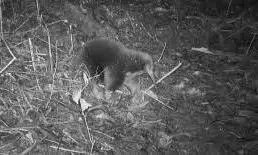
Scientists rediscover Attenborough’s long-beaked echidna after over 60 years
text_fieldsScientists have rediscovered the elusive Attenborough’s long-beaked echidna, a species not seen for more than 60 years, in Indonesia's Cyclops Mountains.
The echidna, described as having the spines of a hedgehog, the snout of an anteater, and the feet of a mole, is a member of the monotremes, an egg-laying group that separated from the rest of the mammal tree-of-life about 200 million years ago.
The creature, named after British naturalist David Attenborough, was initially recorded by a Dutch botanist in 1961 and has now been photographed for the first time by a trail camera during a four-week expedition led by Oxford University scientists.
Biologist James Kempton, leading the expedition, made the thrilling discovery on the last day when he found images of the small mammal walking through the forest undergrowth on the final memory card retrieved from over 80 remote cameras.
The echidna, locally embedded in culture, has symbolic significance, with a tradition in the Yongsu Sapari village that conflicts are resolved by sending parties into the forest to search for the echidna. Once found, it symbolises the end of conflict and a return to harmonious relationships. The species is known for its shy, nocturnal behaviour, making it notoriously difficult to find.
Kempton's team faced various challenges during the expedition, including an earthquake, malaria, and even a leech attached to an eyeball. Working with the local village Yongsu Sapari, they navigated the remote terrain of northeastern Papua.
The rediscovery of Attenborough’s long-beaked echidna is a significant achievement, considering the species had been scientifically recorded only once before in 1961.

















